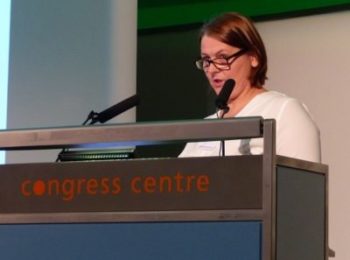Executive director of the Environmental Services Association (ESA), Jacob Hayler, said the fees offer reassurance for circular economy
“The Resources and Waste Strategy reforms remain essential to delivering progress against binding national recycling targets; to reducing waste; and to delivering green growth – so visible policy progress after a prolonged period of stagnation and uncertainty will undoubtedly boost confidence among the organisations and investors responsible for delivering these beneficial outcomes.”

Jim Bligh, director of corporate affairs and packaging at the Food and Drink Federation, said Defra should now empower producers to manage the scheme, encouraging investment, green jobs and innovation in packaging: “Food and drink manufacturers support the government’s zero waste goal and are committed to a cleaner environment. We welcome the long awaited release of base fees for Extended Producer Responsibility (EPR), which helps manufacturers take more responsibility for packaging and helps them plan for 2025 costs. With EPR expected to cost at least £1.4 billion in 2025, it’s crucial that funds are used to improve recycling infrastructure. Everyone must work together to ensure EPR drives value, boosts recycling rates, and fosters a circular economy.”

“With the next set of base fees to come in September once more robust data has been verified by regulatory bodies, we are approaching the longer-term certainty that producers need to ensure they are meeting their compliance requirements. We welcome this guidance from the government and look forward to supporting all stakeholders as they make vital progress towards a more circular economy.”
Dr Nick Kirk, technical director at British Glass, said that while it will always support sustainable practices and principles behind the scheme, the weight-based fee structure fails to recognise the attributes and benefits of glass. He said: “Glass is 100% recyclable, can be recycled an infinite number of times without loss of quality, and has a low environmental impact in terms of chemical leaching due to its inert nature. We welcome the decision to adopt higher fees for lighter packaging materials, however, we urge Defra to go further by adopting a units-based approach to avoid jeopardising the glass industry; EPR in this current form is not a material-neutral policy.”
He concluded: “We urge the government and stakeholders to reconsider the fee structure of the EPR scheme in advance of the second set of illustrative base fees due to be published in September. Adopting a cost per-unit system will drive better environmental outcomes, as individual units of packaging impact the environment rather than the weight of packaging. Defra must avoid market distortion through EPR and develop a more equitable and competitive market for all packaging materials. We call on the government to consult packaging industries further on the EPR fees, and to delay the introduction of EPR in the meantime.”

Tom Giddings from Alupro said the organisation welcomes the release of these long-awaited illustrative base fees for packaging EPR; noting that the fees “raise more questions than answers”. He added: “Firstly, we were very concerned to read in the accompanying notes that aluminium fees were based almost exclusively on residual waste disposal costs, which simply does not align with the experience of our members in the UK aluminium recycling market, where non-beverage packaging is regularly recycled from kerbside collections in the same way as beverage cans. Additionally, aluminium packaging can be recovered even after incineration from the bottom ashes; thousands of tonnes were recycled back into the circular economy last year through this route alone. Therefore, Defra’s assumptions and data for aluminium appear flawed or outdated.
“Secondly, the dataset used to support these costings is from as early as 2017; this is simply unacceptable, as both the market and recycling performance has changed drastically since then. For example, the aluminium all-packaging recycling rate has risen by over 15% in that time! EPR and associated costs must be based on more recent data and costs.
Lastly, it appears to us that the methodology for how different materials have been calculated in inconsistent. For example, glass has its own model of costs; why? Another example would be where for wood and other materials, which have also (like non-beverage aluminium) been assumed to go to residual waste, those categories have significantly lower associated costs. We’re looking forward to engaging with Defra officials over the coming weeks both to better understand how these numbers were generated and to supply more up-to-date and relevant data to support the next round of figures.”










Subscribe for free